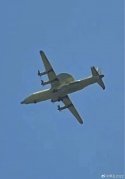But how does 8 hour endurance mean you need 3 for one area? They can just alternate, one refuels while the other loiters, surely it doesnt take that long..
Because at present, most of the PLA's AEW&C fleet do not have mid-air refueling capabilities. They must return to their bases to be refueled. This scenario will become more amplified as the PLAAF and PLAN operates further away from the Chinese coastlines*. The Himalayan Frontier with few Chinese airbases and dual-use airports that are spread far apart across the Xizang Plateau and the Taklamakan Desert brings similar problems too.
(*This is also why I'm arguing that the PLA should capture the southern 1/3rd, if not the southern 2/3rds of the Ryukyu Islands in Operation AR, provided direct & active Japanese and US intervention in the war. The main island of Taiwan itself can be quarantined/blockaded without ever landing any troops onto it, but the same cannot be said for the Ryukyus due to its tactical and strategic significance for the war effort.)
Besides, while the planes themselves have the endurance to loiter and conduct missions that long - The crew onboard do not. Working in high-pressure environment for extended durations means performance will automatically degrade after a certain period of time.
Doing this consistently and repeatedly, and it will be a matter of time before:
1. The crew gave out; or
2. They got shot down because they didn't manage to detect and direct allied fires at the enemy forces in time; or
3. They crashed due to pilot error -
All from fatigue.
Humans are still humans, after all.
This is yet to include other factors that are expected to eat away at the AEW&C fleet during peer-to-peer wars:
1. Damaged/shot down by enemy action during combat missions;
2. Combat and non-combat accidents;
3. Maintenance backlogs after intensive usages;
4. Damaged/destroyed on the ground by enemy actions or accidents, etc.
All of these will demand more airframes and crew than what we're typically associated with during peacetime.
Last edited:

